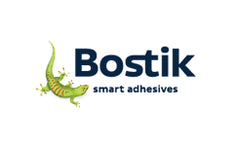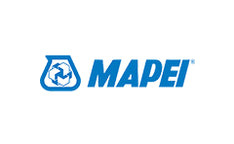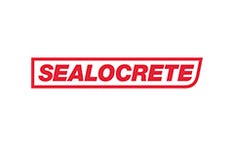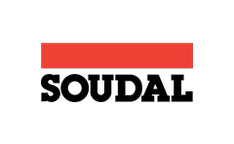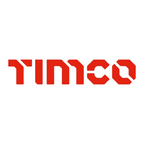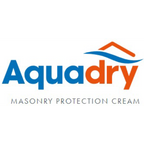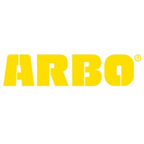Introduction
If you’ve ever stood in the hardware aisle staring at dozens of boxes of screws, you know how overwhelming it can be. Should you pick brass or stainless steel? Countersunk or round head? Coarse thread or fine thread?
The truth is, choosing the right wood screw is one of the most important steps in ensuring your project is strong, long-lasting, and looks professional. Whether you’re building a deck, hanging shelves, making furniture, or repairing a shed, the right screw type can make the difference between a sturdy joint and a frustrating failure.
This guide breaks down the most common types of wood screws, their ideal uses, and practical tips for choosing the right one. By the end, you’ll know exactly which screw to reach for — and why.
Quick Navigation
1. Understanding the Basics of Wood Screws
Before diving into specific types, it’s worth understanding what makes a wood screw unique.
- Sharp Point & Deep Threads – Designed to cut into timber fibres for a strong grip.
- Tapered Shaft – Helps prevent wood splitting.
- Variety of Head Shapes – Determines how the screw sits in or on the surface.
- Different Materials & Coatings – Affect strength, rust resistance, and appearance.
Pro Tip: Even with self-tapping screws, drilling a pilot hole in hardwood can make driving smoother and prevent splitting.
2. Common Types of Wood Screws
a) Countersunk Wood Screws
Overview
Countersunk wood screws are designed so the head sits flush with, or slightly below, the timber surface. This delivers a smooth, professional finish ideal for visible joinery and furniture work.
Key Features
- Head shape: Flat, conical underside that tapers into the shank for a flush finish.
- Finish options: Can be left visible, filled, or plugged for an invisible fix.
- Drive styles: Commonly Pozi (PZ) or Phillips (PH); Torx/star and slotted variants exist.
- Thread types: Standard single-thread for hardwoods; twin-thread options for softwoods.
Best Uses
- Furniture assembly and repair
- Cabinetry and shelving
- Door frames, skirting boards, architraves
- Kitchen fitting and worktops
- General carpentry where a neat, flush finish is required
Materials & Coatings
Brass
Decorative indoor applications (e.g., fine furniture and joinery). Softer than steel—always pre-drill to prevent snapping.
Stainless Steel
High corrosion resistance for exterior and damp locations (decking, bathrooms, coastal projects).
Zinc-Plated Steel
Cost-effective, general-purpose protection for interior projects with moderate corrosion exposure.
Black-Oxide Coated
Sleek, dark appearance that blends with darker timbers or hardware; best for indoor, low-moisture environments.
Installation Tips
- Pre-drill in hardwoods: Use an appropriate pilot size to reduce splitting and driving torque.
- Use a countersink bit: Create a clean recess so the head sits perfectly flush and avoids timber bruising.
- Match the driver: Use the correct PZ/PH/Torx bit to minimise cam-out and head damage.
- Fill or plug if needed: Apply wood filler (painted finishes) or matching timber plugs (clear or stained finishes) for a seamless look.
Example DIY Applications
- Worktops: Fixing an oak kitchen worktop with stainless countersunk screws for strength and a near-invisible finish.
- Bookcases: Building a pine bookcase and filling over zinc-plated countersunk heads before painting.
- Trim & mouldings: Fixing hardwood skirting using brass countersunk screws for a traditional, visible detail.
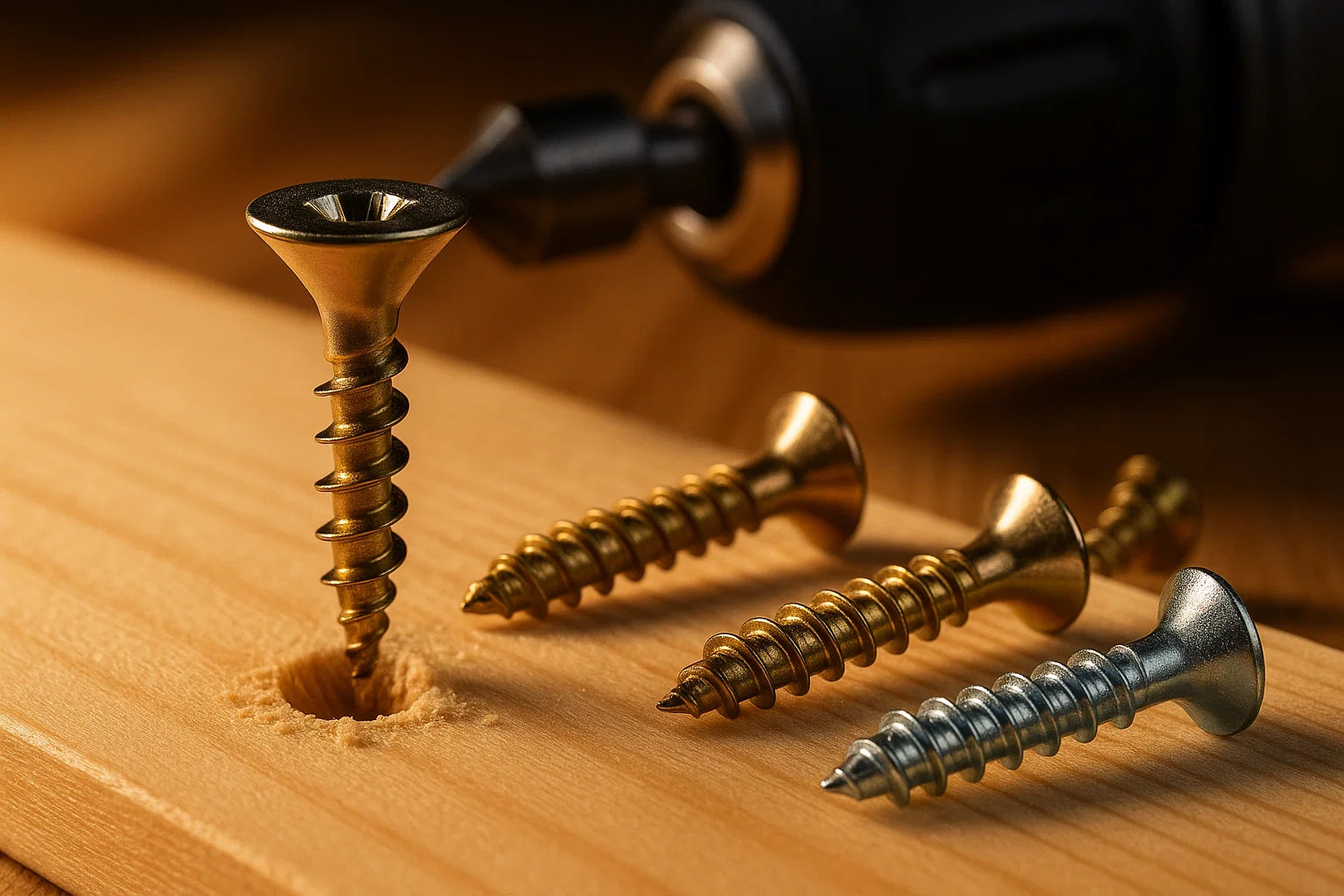
b) Round Head Wood Screws
Overview
Round head wood screws have a dome-shaped head that sits on top of the timber surface rather than being driven flush. This makes the head visible, which can be decorative or functional, and allows for easier removal when needed.
Key Features
- Head shape: Rounded dome with a flat underside to sit on the surface of the material.
- Finish: Always visible, offering a traditional or decorative look.
- Drive styles: Commonly slotted or Pozi (PZ); Phillips (PH) and Torx versions are also available.
- Thread type: Standard single-thread for hardwoods; twin-thread versions for softwoods and speed of installation.
Best Uses
- Attaching hinges and brackets
- Fixing nameplates, handles, and decorative hardware
- Projects where screw head access for maintenance is important
- Traditional furniture making where a visible fixing is part of the design
Materials & Coatings
Brass
Ideal for decorative applications such as period furniture, heritage joinery, and visible fittings.
Stainless Steel
Resistant to corrosion, making it suitable for outdoor or damp environments where the head will remain visible.
Zinc-Plated Steel
Cost-effective for general indoor projects with moderate corrosion protection needs.
Installation Tips
- Use a pilot hole: Reduces the risk of splitting, especially in hardwoods.
- Match head style to hardware: The rounded head should complement hinges, brackets, or fittings for a neat look.
- Use the correct driver: Prevents cam-out and damage to the head, especially with softer brass screws.
Example DIY Applications
- Hinges: Fixing brass hinges to a wooden jewellery box with matching round head brass screws.
- Hooks and brackets: Installing decorative coat hooks on a hallway timber board.
- Nameplates: Attaching a polished brass nameplate to a garden gate.

c) Coach Screws (Lag Screws)
Overview
Coach screws, also known as lag screws, are heavy-duty wood fasteners designed for structural applications. They feature a thick shank, deep coarse threads, and a hexagonal head, allowing them to be driven with a spanner, wrench, or socket for maximum torque.
Key Features
- Head shape: Hexagonal head for use with hand or socket tools.
- Thread type: Coarse, deep threads for a strong grip in wood and other materials.
- Strength: Designed for high load-bearing capacity and structural strength.
- Installation: Often used with washers to distribute load and protect the timber surface.
Best Uses
- Decking frames and substructures
- Pergolas, gazebos, and outdoor timber structures
- Fixing heavy timbers such as sleepers in landscaping
- Securing timber to masonry with wall plugs
Materials & Coatings
Galvanised Steel
Durable and rust-resistant, ideal for exterior use and exposed conditions.
Stainless Steel
Exceptional corrosion resistance for long-lasting performance in coastal or damp environments.
Zinc-Plated Steel
Affordable and suitable for indoor or sheltered structural applications.
Installation Tips
- Pre-drill pilot holes: This prevents splitting and reduces the torque required for installation.
- Use washers: Distributes pressure evenly, preventing the head from embedding too deeply in the timber.
- Right tools: Use a socket wrench or impact driver for faster installation.
- Check length: Ensure the screw penetrates deeply enough for a secure structural hold.
Example DIY Applications
- Decking subframe: Using galvanised coach screws to secure joists to posts for a robust base.
- Raised garden beds: Fixing timber sleepers together with stainless steel coach screws for durability.
- Pergola construction: Connecting heavy posts and beams using coach screws with washers for maximum stability.

d) Twinthread Wood Screws
Overview
Twinthread wood screws use a dual-start thread to advance faster with each turn, making them ideal for speed assembly in softwoods and man-made boards. They reduce driving time and can bite quickly with less downward pressure.
Key Features
- Dual-start thread: Two threads wrapped around the shank increase insertion speed.
- Good in soft materials: Excellent grip in softwood, chipboard, and some MDF applications.
- Reduced cam-out: Often paired with Pozi or Torx drives for improved torque transfer.
- Countersunk head options: Common for flush finishes in furniture and carcassing.
Best Uses
- Fast assembly of softwood frames and carcasses
- General joinery in pine, spruce, and fir
- Fixing components into chipboard and MDF (with correct pilot/clearance)
- Temporary structures where quick driving matters
Materials & Coatings
Zinc-Plated Steel
Most common, cost-effective choice for interior work with moderate corrosion resistance.
Yellow-Passivated Steel
Enhanced corrosion protection and lubricity for smoother driving; popular in furniture and carcassing.
Stainless Steel (less common)
Used where corrosion resistance is needed; driving speed benefit remains, but availability may be limited.
Installation Tips
- Avoid overdriving: The fast-advancing thread can strip soft materials—stop as soon as the head seats.
- Use pilots in MDF/chipboard: A small pilot or clearance hole reduces swelling and breakout near edges.
- Choose the right drive: Pozi or Torx bits help maintain alignment and reduce cam-out at higher speeds.
- Match length to load: Aim for at least 2.5–3× the thickness of the top piece for a solid hold in softwood.
Example DIY Applications
- Utility shelving: Rapidly assembling softwood shelves and supports.
- Workshop jigs: Quick-build fixtures where frequent adjustments are expected.
- Flat-pack reinforcement: Strengthening chipboard furniture joints with careful piloting.

e) Self-Tapping Wood Screws
Overview
Self-tapping wood screws are designed to create their own mating threads as they are driven into timber, reducing or eliminating the need for pre-drilled pilot holes in softer materials. They save time during assembly and are especially useful for quick repairs or repetitive tasks.
Key Features
- Thread-cutting action: The sharp tip and cutting threads form their own path in the material.
- Variety of tips: Includes sharp points for timber and drill points for harder materials or composites.
- Head styles: Commonly countersunk, pan, or round head for different finish requirements.
- Drive types: Pozi, Phillips, Torx, and slotted options available depending on application.
Best Uses
- Quick timber repairs without extensive prep
- Fixing fittings and brackets to softwoods
- Joining timber components in non-structural projects
- Applications where speed and efficiency are more important than decorative finish
Materials & Coatings
Zinc-Plated Steel
General-purpose indoor use with basic corrosion resistance, ideal for workshop and household projects.
Stainless Steel
Excellent for outdoor or damp environments, particularly in garden structures and coastal settings.
Black-Phosphate Coating
Reduces friction during driving and offers a clean finish; often used for screws in woodworking jigs and fixtures.
Installation Tips
- Assess timber type: While softwoods may not need pilot holes, hardwoods benefit from one to prevent splitting.
- Use correct driver bits: Prevents cam-out and head damage, especially on smaller screws.
- Avoid overtightening: The thread-cutting action can strip the hole if driven too far.
- Lubricate for hard materials: A dab of wax or soap on the threads can ease driving into denser woods.
Example DIY Applications
- Cabinet hinge repair: Reattaching a loose hinge directly into a pine frame without drilling a pilot.
- Garden planter assembly: Using stainless self-tapping screws to quickly join treated softwood panels.
- Tool rack installation: Fixing hooks or brackets to workshop walls made of softwood framing.

f) Chipboard Screws
Overview
Chipboard screws are specifically designed for use in particleboard, MDF, and other man-made boards. They feature a thin shank and sharp point to reduce splitting and a deep thread profile for maximum grip in less dense materials. Often used in flat-pack furniture and flooring, they are a staple in both DIY and professional joinery.
Key Features
- Thin shank: Minimises material displacement to reduce splitting in composite boards.
- Deep, sharp threads: Provide strong holding power in low-density materials.
- Head style: Most commonly countersunk for flush fitting, sometimes with ribs under the head for self-countersinking.
- Drive types: Predominantly Pozi (PZ) for reduced cam-out during high-torque driving.
Best Uses
- Flat-pack furniture assembly
- Securing chipboard flooring to joists
- Fitting kitchen carcasses
- General joinery in MDF and particleboard
Materials & Coatings
Yellow-Passivated Steel
Offers added corrosion protection and a low-friction surface for easier driving — common in furniture assembly.
Zinc-Plated Steel
Affordable choice for indoor projects with moderate corrosion resistance.
Stainless Steel
Less common, but useful in humid or outdoor environments where chipboard or MDF is used under shelter.
Installation Tips
- Pilot holes help: Especially important near board edges to prevent breakout.
- Choose thread type carefully: Coarse thread for chipboard, fine thread for hardwood-faced panels.
- Use correct driver bit: Prevents stripping and ensures a clean, flush fit.
- Avoid overtightening: Can crush the board fibres and weaken the fixing.
Example DIY Applications
- Wardrobe assembly: Joining MDF panels securely with yellow-passivated chipboard screws.
- Subfloor installation: Fixing tongue-and-groove chipboard sheets to timber joists.
- Kitchen units: Securing chipboard carcass components for a solid fit before door hanging.

g) Drywall-to-Timber Screws
Overview
Drywall-to-timber screws are designed to fix plasterboard (drywall) to wooden studs and frames. They have a bugle-shaped head that sinks neatly into the plasterboard without tearing the paper face, ensuring a smooth surface for finishing.
Key Features
- Bugle head: Distributes driving force to prevent damage to plasterboard surfaces.
- Sharp point: Allows quick penetration into timber studs without pre-drilling.
- Coarse thread: Designed to grip timber securely while holding plasterboard tight.
- Black-phosphate coating: Reduces friction and provides mild corrosion resistance.
Best Uses
- Fixing plasterboard to timber stud walls
- Ceiling plasterboard installation
- Lightweight partition walls
- General interior timber framing projects involving plasterboard
Materials & Coatings
Black-Phosphate Coated Steel
Standard for drywall screws — reduces friction for easier driving and provides a dark finish that won’t show through paint or filler.
Stainless Steel
Less common, but useful in damp environments such as bathrooms or utility rooms where moisture may be present.
Installation Tips
- Use a drywall bit or depth stop: Prevents overdriving, which can weaken the board’s holding strength.
- Spacing: Typically 300mm apart along studs for walls, 200mm for ceilings.
- Drive until just recessed: The head should slightly dimple the surface without breaking the paper face.
- Avoid overtightening: This can strip the timber grip or damage the plasterboard.
Example DIY Applications
- Loft conversion walls: Securing plasterboard to new timber partitions.
- Garage conversion: Lining timber frames with plasterboard for a smooth finish.
- Ceiling repair: Replacing damaged plasterboard panels on timber joists.

h) Decking Screws
Overview
Decking screws are specially designed for outdoor timber decking and other exterior woodworking projects. They have corrosion-resistant coatings or stainless steel construction to withstand the elements, and often feature a design that prevents timber splitting and resists staining from rust.
Key Features
- Corrosion resistance: Coated or stainless finishes to prevent rust and staining in outdoor environments.
- Thread design: Often partially threaded to pull boards tight against joists.
- Drive type: Frequently Torx (star) for high torque without cam-out, sometimes Pozi (PZ).
- Head style: Typically countersunk for a flush finish on decking boards.
Best Uses
- Fixing timber decking boards to joists
- Outdoor furniture construction
- Raised garden beds and planters
- Exterior timber cladding and fencing
Materials & Coatings
Stainless Steel
Maximum rust resistance; ideal for coastal areas and long-term outdoor exposure.
Green Organic-Coated Steel
Blends with decking boards while resisting corrosion; common in treated timber projects.
Yellow-Passivated Steel with Exterior Coating
Cost-effective with good corrosion resistance for general garden structures.
Installation Tips
- Pre-drill near board ends: Prevents splitting, especially in hardwood decking.
- Use the right driver bit: Torx drives offer better torque control and reduced bit slippage.
- Allow for movement: Timber expands and contracts with weather — leave appropriate board gaps.
- Work in straight lines: For a professional finish, mark fixing lines on boards before drilling.
Example DIY Applications
- Garden decking: Installing hardwood or softwood boards securely to a treated timber frame.
- Outdoor benches: Building long-lasting seating with corrosion-resistant screws.
- Planter boxes: Assembling large outdoor planters with green-coated decking screws for visual blend.

i) Brass Wood Screws
Overview
Brass wood screws are a decorative fastening choice, often used in furniture, joinery, and projects where the screw head will remain visible. Brass offers natural corrosion resistance indoors and a classic, warm appearance that complements wood tones, especially in traditional or period-style work.
Key Features
- Material: Solid brass with a gold-like finish that will naturally patinate over time.
- Corrosion resistance: Good for indoor use, though not ideal for harsh outdoor exposure.
- Head styles: Commonly available in countersunk and round head for flush or decorative finishes.
- Drive types: Often slotted for a traditional look, though Pozi and Phillips are available.
Best Uses
- Furniture making and restoration
- Period joinery and heritage building repairs
- Decorative fixtures such as hinges, handles, and plaques
- Cabinet doors and fine woodworking
Advantages
- Attractive finish without the need for paint or plating
- Will not rust, making them suitable for indoor damp areas (e.g., bathrooms)
- Soft metal reduces risk of splitting delicate timber when pre-drilled
Limitations
- Softer than steel — prone to snapping if forced
- Not ideal for heavy structural loads
- Limited corrosion resistance outdoors unless lacquered or coated
Installation Tips
- Always pre-drill: Prevents splitting and reduces torque needed to drive the screw.
- Lubricate threads: A rub over a bar of soap or wax makes driving easier and reduces breakage risk.
- Use the correct screwdriver: Match the slot or Pozi head exactly to prevent slipping and marking the brass.
- Consider pilot and clearance holes: In hardwood, drill a clearance hole in the top piece and a smaller pilot in the lower piece for the best grip.
Example DIY Applications
- Cabinet hinges: Attaching polished brass hinges to a mahogany cabinet.
- Decorative hooks: Securing coat hooks to a varnished timber wall plate.
- Restoration work: Replacing original slotted brass screws in antique furniture to preserve authenticity.

j) Stainless Steel Wood Screws
Overview
Stainless steel wood screws are the go-to choice for outdoor projects and environments where corrosion resistance is critical. They combine strength with durability, resisting rust even in damp or coastal conditions. Ideal for long-term use, they maintain their finish and performance for decades.
Key Features
- Material: Made from stainless steel grades such as A2 (304) or A4 (316) for excellent corrosion resistance.
- Finish: Typically silver-grey with a smooth, clean surface.
- Head styles: Most commonly countersunk for flush fitting, but also available in pan and round heads.
- Drive types: Often Pozi (PZ) or Torx for secure, high-torque driving.
Best Uses
- Outdoor decking and garden structures
- Coastal and marine woodworking projects
- Exterior joinery such as gates, cladding, and fencing
- Bathrooms, kitchens, and damp indoor environments
Advantages
- Exceptional resistance to rust and corrosion
- Long lifespan even in harsh weather conditions
- Maintains appearance without staining surrounding timber
Limitations
- Generally more expensive than steel screws
- Slightly softer than hardened steel — not ideal for high-stress structural loads without design consideration
- Can “gall” (bind) if driven too quickly without lubrication
Materials & Grades
A2 (304) Stainless Steel
Suitable for most outdoor and damp environments; resistant to rain and humidity but not as resistant to saltwater exposure.
A4 (316) Marine Grade Stainless Steel
Maximum corrosion resistance, even in saltwater and highly acidic environments — ideal for coastal installations.
Installation Tips
- Pre-drill hardwoods: Prevents splitting and reduces torque, especially in dense timber.
- Lubricate threads: Use wax or soap to avoid galling during installation.
- Match driver to screw: Torx bits offer superior grip and torque transfer for outdoor projects.
- Allow for timber movement: Particularly important in outdoor decking and cladding installations.
Example DIY Applications
- Decking installation: Using A2 stainless screws for softwood decks in a garden setting.
- Coastal gates: Fixing hardwood gates with A4 marine-grade screws for maximum weather resistance.
- Bathroom fittings: Securing cabinetry in high-humidity areas without risk of rust staining.

3. Screw Head Types in Woodworking
Overview
The head type of a wood screw affects both its appearance and its function. It determines how the screw sits in or on the surface of the timber, how the load is distributed, and what type of tool or bit you need for installation. Choosing the correct head style ensures both strength and the desired finish for your project.
Common Screw Head Types
Countersunk (Flat) Head
The most common screw head for woodworking, designed to sit flush with or just below the timber surface. Ideal for furniture, cabinetry, and projects where a smooth finish is important. Can be filled or plugged for an invisible fix.
Raised Countersunk Head
Similar to a countersunk head but with a slightly domed top. Offers a decorative finish while still sitting partially flush. Common in decorative joinery and traditional furniture.
Round/Dome Head
Fully rounded on top with a flat underside that sits on the surface of the timber. Often used when the screw head is intended to be visible and accessible, such as on hinges, brackets, and nameplates.
Bugle Head
A gently curved head that spreads the load over a larger area, preventing damage to softer materials like plasterboard. Commonly found on drywall screws but sometimes used in timber applications to avoid surface damage.
Pan Head
Low-profile rounded head with a wide, flat underside for strong holding power on the surface. Common in applications where the screw head is visible but a neat, low-profile finish is desired.
Choosing the Right Head Type
- Flush finish: Choose countersunk for a smooth surface.
- Decorative finish: Raised countersunk or round head can enhance the look.
- Surface holding power: Pan head offers excellent grip on fittings and brackets.
- Soft material protection: Bugle head prevents crushing or tearing the surface.

4. Drive Types for Wood Screws
Overview
The drive type of a wood screw determines the shape of the recess in the screw head and the corresponding bit or tool used to drive it. The right drive type can make installation faster, reduce the risk of stripping, and ensure a secure fit between the driver and the screw.
Common Drive Types
Slotted
The original screw drive style with a single horizontal slot. Traditional in appearance but prone to slipping (cam-out) if not driven carefully. Best for heritage or restoration work where authenticity matters.
Phillips (PH)
Cross-shaped recess that allows better bit alignment than slotted screws. Designed to cam-out under excessive torque to prevent overdriving, but this can be a drawback in some applications.
Pozi (PZ)
Similar to Phillips but with additional smaller cross slots, providing greater torque transfer and reduced cam-out. Extremely common in modern woodworking screws and ideal for power driving.
Torx (Star Drive)
Six-point star-shaped recess that offers maximum torque transfer and minimal cam-out. Excellent for high-torque applications like decking screws and structural fixings.
Hex / Socket Head
External hex head (as in coach screws) or internal hex recess for Allen keys. Provides strong torque transfer for heavy-duty applications and structural fixings.
Choosing the Right Drive Type
- For high torque and minimal slippage: Choose Torx.
- For general woodworking: Pozi offers a good balance of grip and availability.
- For heritage projects: Slotted maintains traditional aesthetics.
- For structural use: Hex heads provide maximum driver contact.

5. Screw Materials & Coatings
Overview
The material and coating of a wood screw determine its strength, corrosion resistance, and appearance. Selecting the right combination ensures your fixings last as long as your project, whether indoors, outdoors, or in challenging environments.
Common Screw Materials & Coatings
Brass
Attractive golden finish, naturally corrosion-resistant indoors, and ideal for decorative applications. Softer than steel — always pre-drill to prevent snapping. Common in furniture and heritage joinery.
Stainless Steel
Excellent corrosion resistance, available in A2 (304) for general outdoor use and A4 (316) marine grade for coastal or highly corrosive environments. Perfect for decking, gates, and outdoor furniture.
Zinc-Plated Steel
Steel screws with a thin zinc coating for affordable corrosion protection. Best for interior or sheltered applications. Available in bright zinc or yellow-passivated for enhanced lubricity and durability.
Coated Steel (Organic or Polymer)
Exterior-grade coatings that resist rust and staining, commonly used on decking screws. Often green, brown, or black to blend with treated timber or hardware.
Black-Phosphate Coating
Provides mild corrosion resistance and reduces driving friction. Often found on drywall-to-timber screws where a flush, low-reflective finish is desirable.

Choosing the Right Material or Coating
- Indoor decorative work: Brass or bright zinc-plated steel.
- General interior carpentry: Zinc-plated or yellow-passivated steel.
- Outdoor garden projects: Stainless steel or exterior-coated steel.
- Coastal or marine use: A4 (316) stainless steel for maximum corrosion resistance.
6. How to Choose the Right Wood Screw
Overview
Selecting the correct wood screw ensures a secure, long-lasting connection that suits both the material and the environment. The wrong choice can lead to weak joints, timber splitting, corrosion, or visible defects in the finish.
Key Factors to Consider
1. Wood Type
Softwoods (pine, spruce, fir) often work well with twinthread or coarse-thread screws, while hardwoods (oak, maple, teak) benefit from pre-drilling and single-thread screws for maximum grip without splitting.
2. Load & Strength Requirements
Light-duty furniture can use smaller screws, but structural applications like decking frames require heavy-duty fixings such as coach screws or large stainless steel decking screws.
3. Location & Environment
Indoor projects can use zinc-plated or brass screws, while outdoor or damp conditions require stainless steel or exterior-coated screws to prevent rust and staining.
4. Appearance
Consider whether the screw head will be visible. Use countersunk for flush, neat finishes; round or raised countersunk for decorative work.
5. Installation Method
For power driving, Pozi or Torx drive types minimise cam-out. For traditional work, slotted heads may be chosen for aesthetic authenticity.
6. Screw Length & Diameter
As a rule of thumb, the screw should be at least twice the thickness of the top piece of timber being fixed. Thicker shanks offer more strength but may require larger pilot holes in dense wood.
Quick Selection Guide
- Furniture assembly indoors: Countersunk zinc-plated or brass screws, Pozi drive.
- Outdoor decking: Stainless steel or exterior-coated Torx-drive decking screws.
- Heavy timber framing: Galvanised or stainless coach screws with washers.
- Decorative joinery: Brass round head screws for visible fixings.
7. Practical Tips for Working with Wood Screws
Overview
Even the best wood screws won’t deliver great results if they’re installed incorrectly. Good preparation, correct technique, and the right tools will ensure strong, long-lasting fixings without damaging your timber or fasteners.
Essential Tips
1. Pre-Drilling
In hardwoods, always drill a pilot hole slightly smaller than the screw’s core diameter. This reduces the risk of splitting and makes driving easier.
2. Countersinking
For a flush finish, use a countersink bit to create a neat recess for the screw head. This also prevents the head from damaging the surrounding wood fibres.
3. Use the Right Driver Bit
Match the bit size and type (Pozi, Phillips, Torx, etc.) exactly to the screw to prevent cam-out and head damage.
4. Avoid Overtightening
Once the screw head seats, stop driving. Excess torque can strip threads in softwood or weaken the joint in composite boards.
5. Lubricating Screws
For dense hardwoods or stainless steel screws, a little wax, soap, or specialist screw lubricant reduces friction and prevents binding.
6. Storage and Organisation
Keep screws sorted by size, type, and material in labelled containers or compartment boxes — this saves time and prevents mixing incompatible metals.
7. Test Before Committing
Drive a screw into an offcut of your project material first to check fit, finish, and bite before installing in the final workpiece.
Pro Tip
8. Wood Screw Comparison Table
| Screw Type | Best Use | Common Head Style | Common Drive Type | Material Options | Pro Tip |
|---|---|---|---|---|---|
| Countersunk Wood Screw | Furniture, cabinetry, shelving | Countersunk (Flat) | Pozi / Phillips | Brass, Stainless Steel, Zinc-Plated | Use a countersink bit for a flush, professional finish. |
| Round Head Wood Screw | Decorative fixings, hardware, hinges | Round / Dome Head | Slotted / Pozi | Brass, Stainless Steel | Ideal where the head will be seen and accessed later. |
| Coach Screw (Lag Screw) | Heavy timber joints, decking frames, pergolas | Hex Head | Hex / Socket | Galvanised Steel, Stainless Steel | Use washers to spread the load and prevent head damage. |
| Twinthread Wood Screw | Fast assembly, softwoods | Countersunk (Flat) | Pozi / Phillips | Zinc-Plated Steel | Avoid overtightening to prevent stripping in softwood. |
| Self-Tapping Wood Screw | Quick fixes, general indoor use | Countersunk or Pan | Pozi / Phillips | Zinc-Plated, Stainless Steel | In hardwood, drill a pilot hole to prevent splitting. |
| Chipboard Screw | MDF, particleboard, flat-pack furniture | Countersunk (Flat) | Pozi | Zinc-Plated, Yellow-Passivated | Choose coarse thread for chipboard, fine for hardwood-faced panels. |
| Drywall-to-Timber Screw | Fixing plasterboard to wooden studs | Bugle Head | Phillips | Black-Phosphate Steel | Prevents tearing plasterboard paper face. |
| Decking Screw | Outdoor decking, garden projects | Countersunk (Flat) | Torx / Pozi | Stainless Steel, Coated Steel | Choose corrosion-resistant coated versions to prevent timber staining. |
| Brass Wood Screw | Decorative indoor woodworking | Countersunk / Round | Slotted / Pozi | Brass | Always pre-drill — brass is softer than steel. |
| Stainless Steel Wood Screw | Outdoor furniture, marine use | Countersunk / Round | Pozi / Torx | Stainless Steel | Excellent rust resistance — perfect for coastal projects. |
Conclusion
Wood screws may be small, but they play a huge role in woodworking and DIY...





